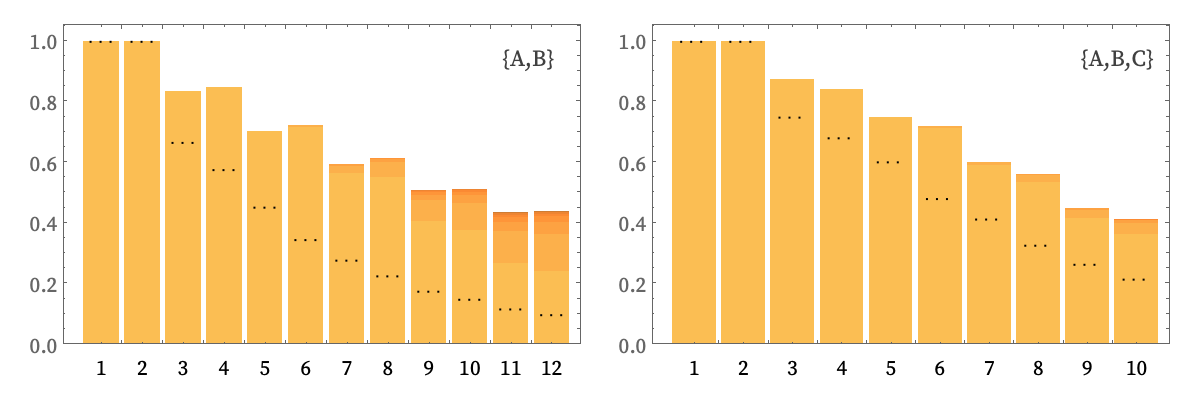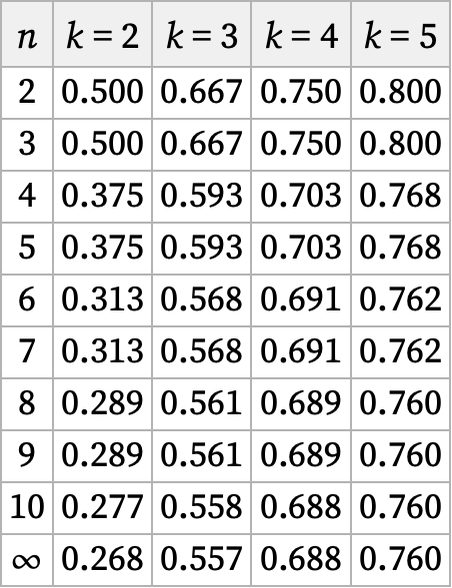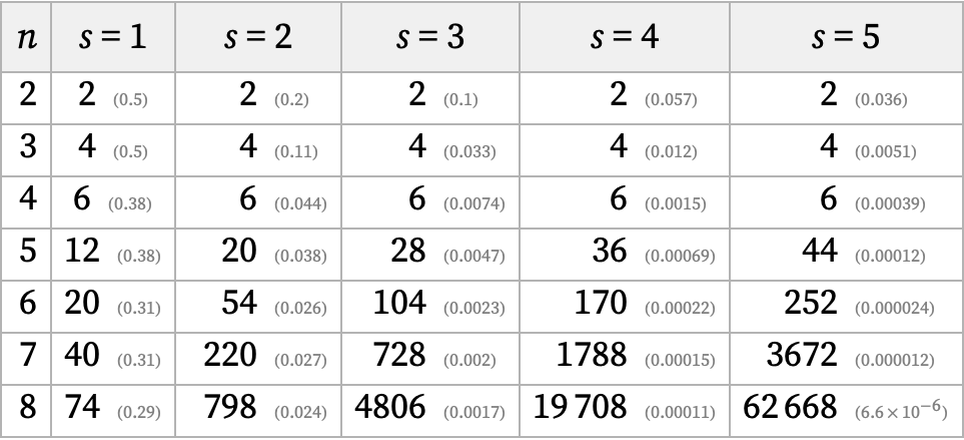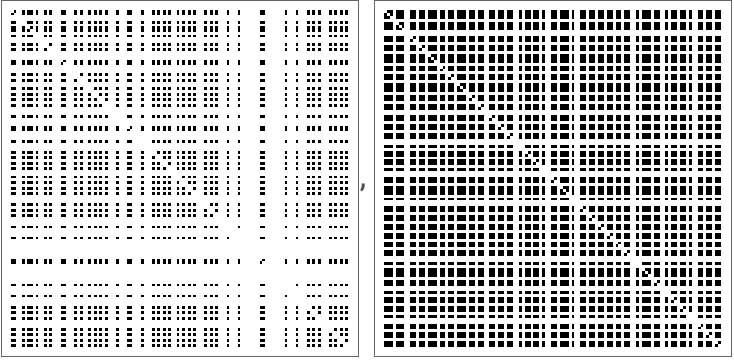The plots below show the fractions of rules found to be totally causal invariant [66], as a function of the total number of elements they involve, for the cases of k = 2 (A, B) and k = 3 (A, B, C):

The darker colors indicate larger numbers of steps to resolve branch pairs. (There is some uncertainty in these plots—conceivably as much as 9% for 10 total elements with k = 3—since in some cases the states graph became too big to compute before it could be determined whether all branch pairs resolved.)
The dotted lines indicate rules are in a sense inevitably causal invariant because their left-hand sides involve strings that do not overlap themselves or each other, thereby guaranteeing total causal invariance. Rules such as AA AAA are causal invariant despite having overlapping left-hand sides because their right-hand sides in a sense give the same result whatever overlap occurs.
Ignoring the structure of rules, one can just ask what fraction of strings are non-overlapping [67]. Out of the total of kn possible strings with length n containing k distinct elements the number that do not overlap themselves is given by [1:p1033]:
This yields the following fractions (for the limit see e.g. [68][11:A003000]):

One can also look at how many possible sets of s strings of length up to n allow no overlaps with themselves or each other [1:p1033]. The numbers and fractions for k = 2 are as follows:

To get a sense of the distribution of non-overlapping strings, one can make an array that shows which pairs of strings (ordered lexicographically) do not allow overlaps. Here are the results for k = 2 and k = 3 for strings respectively up to length 6 and length 4, showing clear structure in the space of possible strings [51]:

 download pdf
download pdf  ARXIV
ARXIV peer review
peer review